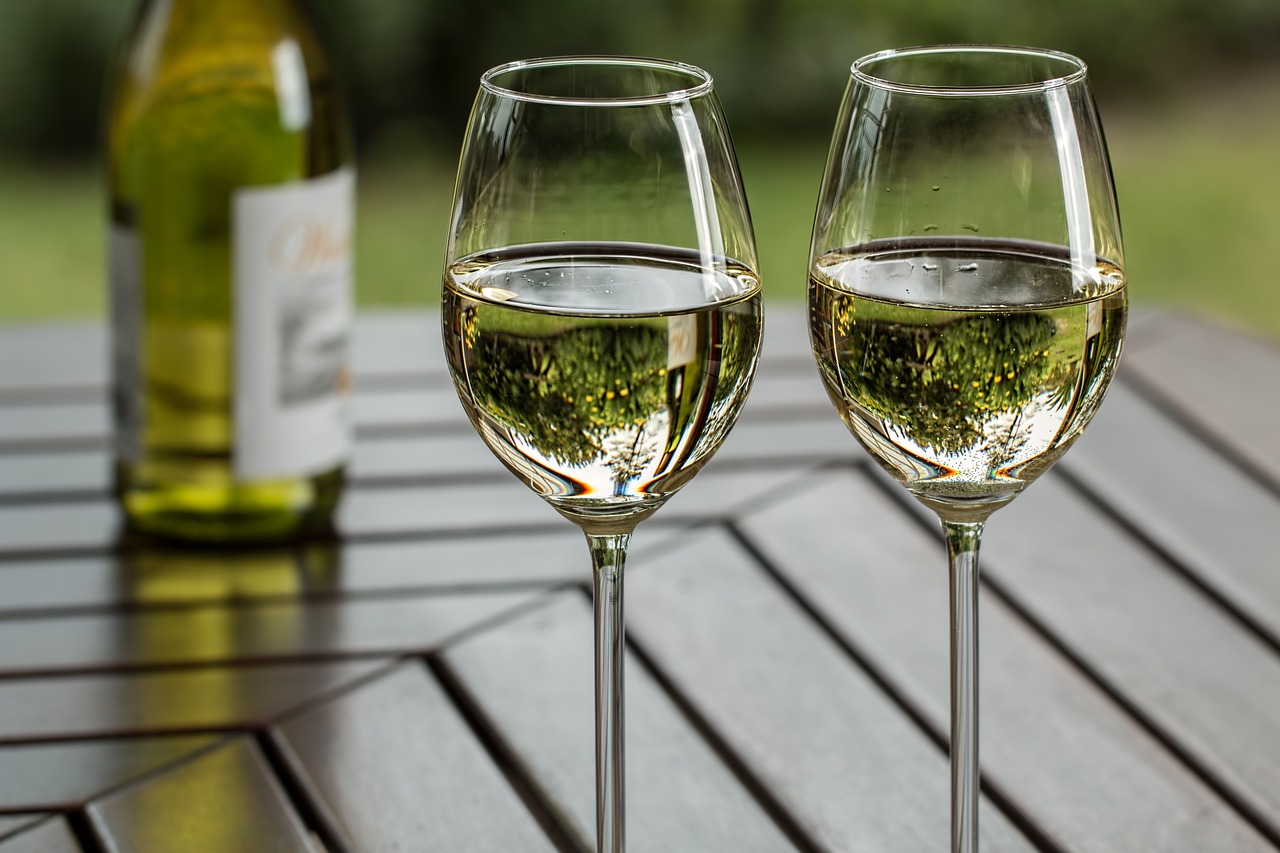In recent years, the surge in popularity of hard seltzers has reshaped the landscape of social drinking, with White Claw emerging as a standout favorite among a diverse crowd of alcohol enthusiasts. This meteoric rise prompts an intriguing question: How many White Claws does it take to get drunk? While seemingly straightforward, the answer encapsulates a complex interplay of science, consumer behavior, and health considerations, making it a topic ripe for exploration. Our deep dive into the world of White Claw not only unveils the scientific mechanisms at play when alcohol meets the unique formulation of this beloved hard seltzer but also addresses the broader implications of its consumption on health, legal standing, and societal norms. As we peel back the layers, we’ll explore the nuances that influence individual experiences with alcohol absorption, the environmental and mental health considerations of hard seltzer consumption, and the cultural phenomena driving its popularity. Whether you’re a casual social drinker, a fervent fan of White Claw, or simply curious about the dynamics of hard seltzers, this article promises to enrich your understanding and perhaps even challenge some of your preconceptions. Join us on this fascinating journey through the effervescent world of White Claw, where science and society collide in every sip.
Contents
- 1 A Quick Look at the Hard Seltzer Craze
- 2 Understanding the Appeal of Hard Seltzers
- 3 Truly versus White Claw – A Side-by-Side Comparison
- 4 How Many White Claws to Get Drunk ?
- 5 The Science Behind the Booze in Hard Seltzers
- 6 Who Drinks Hard Seltzers and Why?
- 7 The Good, the Bad, and the Buzzy
- 8 Environmentally Friendly or Harmful? Impacts of Hard Seltzer Packaging
- 9 Why Moderation Matters
- 10 Conclusion: A Fun Treat, But With Responsible Moderation
A Quick Look at the Hard Seltzer Craze

Hard seltzers seemed to come out of nowhere, but their meteoric rise in popularity has been swift. These drinks are now staples at backyard barbeques, pool parties, and nights out on the town. What exactly sparked this fizzy new trend?
- Health-conscious choices: Many hard seltzer fans initially turned to the drinks as lower calorie, lower carb options compared to beer, wine, and mixed drinks.
- New flavors: Truly and White Claw broke out of the common beer flavor profiles by offering drinks in flavors like mango, grapefruit, and black cherry. The variety appealed to new demographics.
- Social media influence: Instagram pages and viral videos spotlighting the portability, flavors, and low calorie count of hard seltzers fueled mass interest.
- Celebrity endorsements: High-profile brand partnerships with athletes and pop culture figures helped validate hard seltzers as a stylish new drink choice.
Now hard seltzers account for nearly 10% of all alcohol sales, proving more than just a passing fad. But why do consumers prefer these spiked sodas compared to other alcoholic options?
Understanding the Appeal of Hard Seltzers
There are several key factors that explain the appeal and rampant growth of the hard seltzer market:
Alcohol Content
Hard seltzers generally have around 5% ABV (alcohol by volume). This gives a buzz similar to most beers. The alcohol content is enough to feel a drink’s effect, while still allowing control.
Calorie Count
A 12 oz hard seltzer averages around 100 calories or less. For health-focused drinkers, swapping a piña colada or margarita for a seltzer saves hundreds of calories per drink.
Carb Content
Many hard seltzers tout themselves as low carb or even carb-free options, appealing to keto and paleo diets. This pairs well with their low calorie counts.
Portability
Slim cans fit easily into purses or pockets, and variety packs are highly portable 12-can toppers. Hard seltzers are discrete and travel-friendly.
Flavors
Unique, appealing flavors from peach to black cherry let drinkers enjoy new tastes. Flavor variety packs provide diverse options for every palate.
So for calorie-counting, carb-avoiding, flavor-loving consumers, hard seltzers check a lot of boxes! Now let’s examine two of the most popular brands dominating this market.
Truly versus White Claw – A Side-by-Side Comparison
Truly
The Truly brand helped launch hard seltzers into the mainstream in 2016 as a subsidiary of Boston Beer Company. Their use of fruit essences gives each seltzer an authentic flavor profile.
See more : Chai Tea for Energy? How Caffeine Compares to Coffee
Alcohol Content – 5% ABV
Flavors – Approximately 20 unique flavors like Wild Berry, Citrus, and Passionfruit
Calories – 100 calories per 12 oz can
Carbs – 2g carbs per 12 oz can
Packaging – Available in 12-can variety packs, single flavor 12-packs, and larger 24-25 oz single cans.
White Claw
Introduced in 2016, White Claw quickly became synonymous with hard seltzers. Their blend of seltzer water, alcohol base, and natural flavors keeps carb counts low.
See more : Chai Tea for Energy? How Caffeine Compares to Coffee
Alcohol Content – 5% ABV
Flavors – Around 10 core flavor collections like Mango, Raspberry, and Black Cherry
Calories – 100 calories per 12 oz can
Carbs – 2g carbs per 12 oz can
Packaging – 12-can variety packs, single flavor 12-packs, and 19.2 oz single cans
So in terms of alcohol content, carb count, and calorie count, Truly and White Claw offer essentially identical nutritional profiles. Truly does provide double the flavor choices, while White Claw counters with additional large single can options.
Now that we’ve covered the basics, let’s take a deeper, scientific look at how these seltzers deliver a buzz.
How Many White Claws to Get Drunk ?
The Science Behind the Booze in Hard Seltzers
Hard seltzers’ low calorie and carb count may seem too good to be true for an alcoholic beverage. So how does a 100 calorie Truly or White Claw get you buzzed? Let’s explore the science of alcohol absorption.
Standard Drink Units
One 12 oz hard seltzer at 5% ABV contains 0.6 fluid ounces of pure alcohol. This equates to nearly one standard drink unit. Per the USDA:
- 12 fl oz regular beer at 5% ABV = 0.6 standard drinks
- 5 fl oz wine at 12% ABV = 0.6 standard drinks
- 1.5 fl oz distilled spirits at 40% ABV = 0.6 standard drinks
So one hard seltzer delivers a similar alcohol payload compared to other popular drinks.
Alcohol Absorption
See more : Counting Calories? See What’s in a Bottle of Red Wine
When you take a sip of hard seltzer, here is what happens:
- Alcohol passes through the stomach lining into the bloodstream. Hard seltzers reach peak absorption within 30-60 minutes.
- Approximately 20% of alcohol is absorbed through the stomach, while 80% is absorbed through the small intestine.
- Carbonation speeds up alcohol absorption by helping shuttle booze through the stomach faster.
- Once in the bloodstream, alcohol travels to tissue and organs like the brain, slowing functions.
In summary, hard seltzers provide an efficient alcohol delivery mechanism thanks to their carbonated profile. Without carbs and sugars to slow absorption, the alcohol reaches the bloodstream rapidly.
Who Drinks Hard Seltzers and Why?
Hard seltzers like Truly and White Claw initially caught on among health-conscious millennials, especially women. But the appeal has expanded across generations and demographics:
- Millennials still dominate, with nearly 50% of drinkers aged 21-34. They gravitate to new flavors and active lifestyles.
- Gen X is the next biggest group, appreciating low carbs. More men are drinking seltzers here than millennials.
- Baby boomers lag behind, but retirement communities and older drinkers are catching on to the trend.
- Athletes choose refreshing seltzers as a post-workout recovery drink for hydration.
- Keto/paleo dieters opt for the low sugar and low carb nutrition profile.
- Gluten-free consumers appreciate a gluten-free booze option.
- Health-conscious women were early adopters drawn to light, flavorful alcohol options.
Hard seltzers also align with consumer trends like:
- Premium, unique flavor experiences
- Gender neutral branding as opposed to masculine beer marketing
- Natural ingredients and gluten-free positioning
- A desire for functional drinks that hydrate
The portability and discretion of hard seltzers make them ideal beverages for many occasions as well. Though health benefits drew many first drinkers in, the convenience and taste keep them coming back.
The Good, the Bad, and the Buzzy
Hard seltzers offer a tasty new way to catch a moderate buzz, but some drawbacks come with the booze. Moderation and safety are key for any alcohol consumption.
Potential Benefits
When enjoyed responsibly, potential upsides of harder seltzers include:
- Low calorie counts compared to beer, wine, and cocktails
- Hydration from the seltzer water base
- Low sugar and carbs compared to other alcohol sources
- Gluten-free and allergen friendly
- Portability and discreet consumption in public or outdoors
- Flavor variety from endless combinations
Potential Risks
Taken excessively, risks of overindulging in hard seltzers consist of:
- Alcohol poisoning – Drinking too much too fast can be dangerous. Hard seltzers’ bubbly flavor can mask alcohol strength.
- Dehydration – Alcohol acts as a diuretic, increasing water loss. This counteracts the hydration benefits of seltzer water.
- Weight gain – The “low calorie” branding can lead people to overconsume. Extra alcohol calories accumulate fast.
- Addiction – For those prone to alcoholism, seltzers offer an easy source to feed addictive drinking habits.
- Unsafe behavior – Intoxication from hard seltzers lowers inhibitions and motor skills like any alcohol.
Moderation and common sense drinking practices are critical with any alcoholic beverage.
Environmentally Friendly or Harmful? Impacts of Hard Seltzer Packaging
Hard seltzer cans and bottles accumulating in recycling bins and landfills suggest the drinks come with an environmental cost. But how eco-friendly or damaging is that packaging?
Benefits
- Slim cans maximize shipping efficiency and use less aluminum than glass bottles.
- Many brands use BPA-free cans without plastic liners.
- Certain varieties utilize food-grade recycled plastic rings for multipacks.
- Some companies offset carbon emissions from production.
Drawbacks
- Cans must be recycled properly and not tossed as litter into oceans and nature.
- Most rings and multi-can packages still use harmful plastic wrapping.
- Supply chain emissions and water usage for aluminum production carry impacts.
- Flavor variety packs multiply packaging waste compared to single flavors.
While better than some products, hard seltzers leave ample room for improvement in terms of sustainable materials and ethical production. Conscientious consumers should drink and dispose responsibly, and pressure brands to innovate for people and planet over profit.
Why Moderation Matters
When consumed judiciously and mindfully, hard seltzers can offer a fun way to enjoy flavorful drinks with friends. But alcohol of any kind has associated risks and dangers that require self-restraint. Here are some tips:
- Count your drinks – Keep track of how many you have in a sitting.
- Alternate with water – Hydrate frequently to avoid overconsumption.
- Eat enough – Never drink on an empty stomach.
- Watch alcohol content – Higher ABV means greater intoxication risk.
- Avoid excess – Overdoing it on any alcohol harms health and safety.
- Know your limits – Stay aware of personal tolerance levels.
Moderation also means being selective about when and how often to enjoy hard seltzers. Saving drinking only for special weekends or events promotes control and balance. Prioritizing wellness, responsibility, and self-care is key.
Conclusion: A Fun Treat, But With Responsible Moderation
Hard seltzers like cult favorites Truly and White Claw offer exciting new flavor profiles for fans of fizzy, fruity drinks. Their refreshing carbonation and range of choices empower consumers to make better-for-you alcohol choices tailored to their lifestyle needs and preferences.
But with the fun flavors and convenience of hard seltzers comes responsible drinking. Moderation, hydration, self-monitoring, and safety practices allow drinkers to enjoy seltzers as an occasional treat. Through a balanced approach, we can indulge in the joys of hard seltzers sensibly, sustainably, and healthily.
Chef Angelo Landi has been in the culinary industry for over 20 years, and he has spent the last six of those developing the menu for Coal Vines. His favorite pizza on the menu is the Spicey Meatball, which is made with spicy sausage, pepperoni, and calabrese salami. When he’s not in the kitchen cooking up a storm, Chef Angelo enjoys spending time with his wife and two young children.
Related posts:
 How Much Caffeine in Arizona Green Tea? | Coalvines
How Much Caffeine in Arizona Green Tea? | Coalvines
 Party Planning? Know Your Champagne Bottle Servings
Party Planning? Know Your Champagne Bottle Servings
 Worried About Caffeine? What to Know About Jasmine Tea
Worried About Caffeine? What to Know About Jasmine Tea
 Caffeine in Sierra Mist? Get the Surprising Facts Here
Caffeine in Sierra Mist? Get the Surprising Facts Here
 Counting Calories? See What’s in a Bottle of Red Wine
Counting Calories? See What’s in a Bottle of Red Wine
 Starbucks Frappuccino – How Much Caffeine Are You Drinking?
Starbucks Frappuccino – How Much Caffeine Are You Drinking?
 Wine Forever? How Long Your Unopened Bottles Really Last?
Wine Forever? How Long Your Unopened Bottles Really Last?
 Is There Caffeine in Twisted Tea? What You Need to Know
Is There Caffeine in Twisted Tea? What You Need to Know
